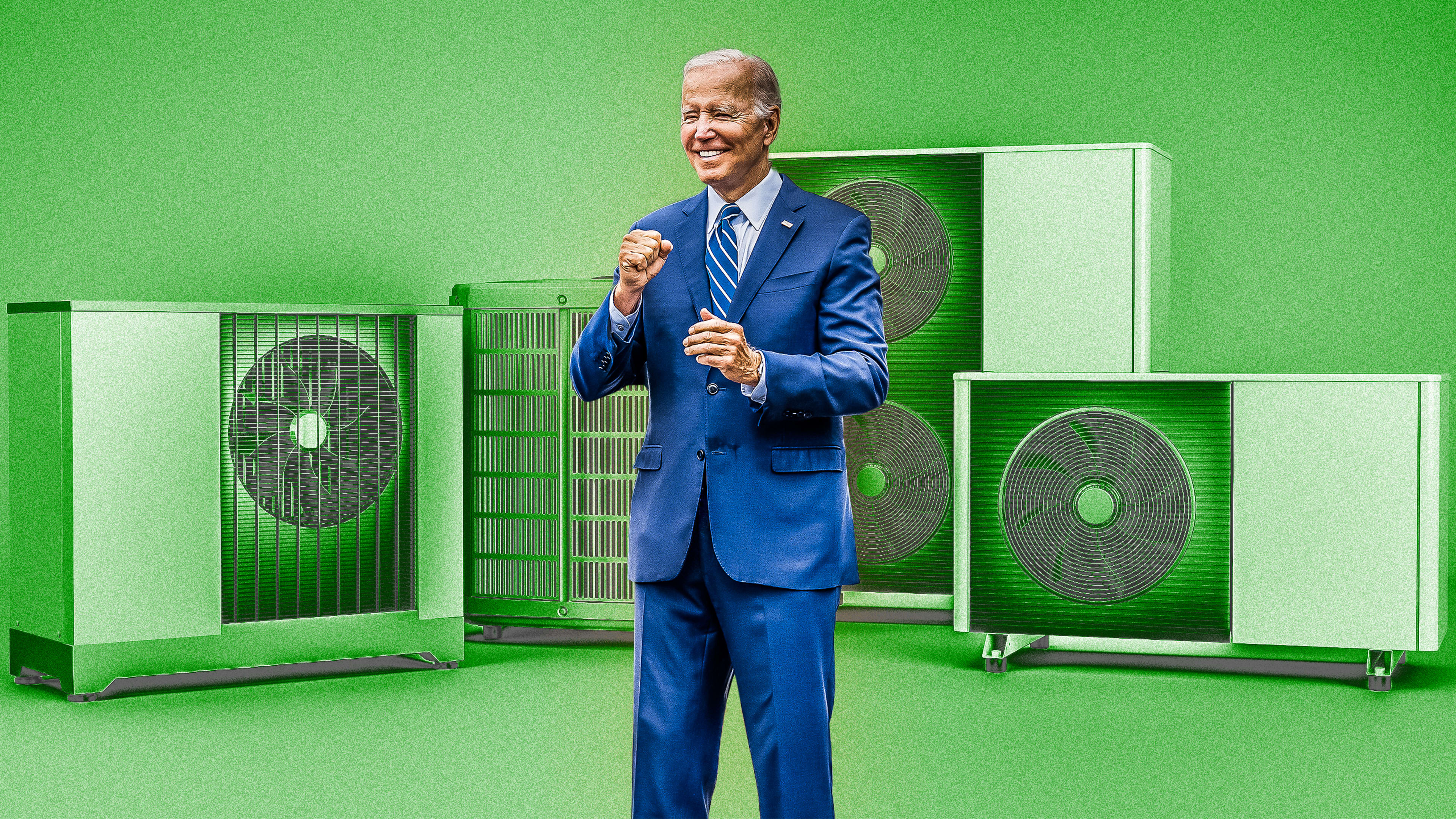The Biden Administration’s recently passed Inflation Reduction Act (IRA) hits a lot of varied targets, from lowering prescription drug costs to changing the ways corporations are taxed to tamping down the record levels of inflation that are spiking consumer costs across the country. At its heart, though, the bill is aimed at fighting the climate crisis. One key way it aims to do that is by increasing energy-efficiency incentives in the built environment. And that means there’s a lot of money on the table for regular homeowners to turn their energy-sucking houses into hyperefficient green machines.
A new analysis of the bill by the sustainability-focused Rocky Mountain Institute (RMI) finds that the IRA’s main rebates and tax credits could bring electrification and energy-efficiency upgrades to millions of homes. In total, the bill’s new rebates and expansions of existing tax credits will create more than $23 billion in funding to electrify homes, upgrade heating, cooling, and ventilation equipment, and develop entirely new buildings that meet the highest federal standards for efficient energy use.
RMI’s analysis finds that the bill could result in 650,000 newly constructed energy-efficient homes, 2.4 million electrification upgrades, and the installation of 7.2 million highly efficient heat pumps. Most of the rebates and tax incentives target low- and middle-income households, which often see excessively high energy bills, due to deferred maintenance and the high cost of implementing energy-efficiency upgrades.
“Because the incentives are so generous, particularly with the electric program, I think we’ll start seeing major renovations in low-income households, which is really exciting,” says Alisa Petersen, RMI federal policy manager and coauthor of the analysis. “Especially for low-income households, if you can essentially do a free electrification upgrade, I don’t know why that funding wouldn’t be eaten up immediately.”
Heat pumps are an especially exciting area for energy-efficiency upgrades, according to Petersen. Heat pump systems, which can both heat and cool homes using electricity instead of natural gas or heating oil, use less than half as much energy as conventional furnaces and air conditioners. And though they can create long-term savings, their upfront costs can be around $8,000. For households making 80% or less of the area median income, programs through the IRA would make the installation of heat pumps free. Those making higher incomes can also qualify for tax credits in the thousands of dollars, as can the developers and operators of affordable housing.
Petersen says getting heat pumps into houses may take time, and will require more contractors to better understand this relatively new technology. “If you think about the average consumer, they’re not researching their HVAC. If a piece of HVAC equipment breaks, they typically just replace it, like for like,” she says. The IRA also includes about $200 million for state-run training programs that help contractors learn about these kinds of efficiency options, Petersen says. “Contractor education and training is going to be such a large part of this.”
The details of the rebate programs still need to be ironed out at the state level, and it could take one to two years before those incentives are available to homeowners and builders. The tax credits, which expand already existing programs, will be available January 1, allowing homeowners to get heat pumps and other energy-saving devices installed for less than half of what they would cost today.
Petersen says that one overlooked element of the IRA’s energy-efficiency programs is that many come in the form of tax credits that have no upper limit to the number of people who can take advantage of them. RMI’s analysis of the bill estimates that those tax credits will result in 7.2 million heat pumps being installed, but that may be a conservative guess.
“In theory, it could be 10 times that if more people decide to install heat pumps,” she says. “So I think there’s a lot of potential for the tax credits to scale.”
Recognize your brand’s excellence by applying to this year’s Brands That Matter Awards before the early-rate deadline, May 3.
